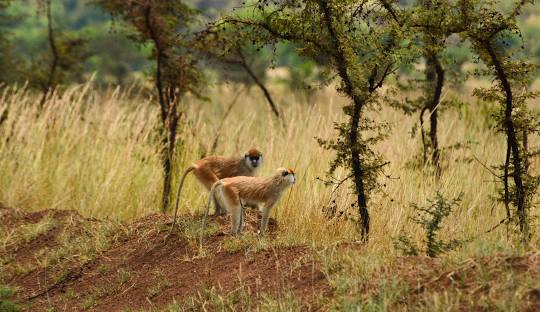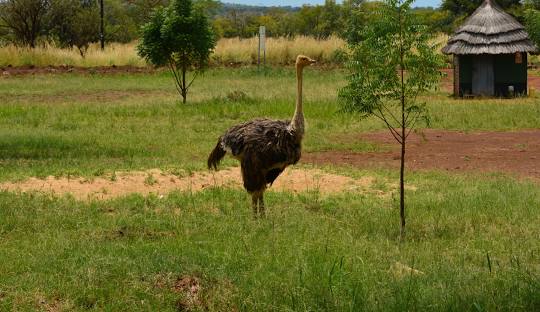Pian Upe Game Reserve is a significant protected area located in the Karamoja region in the Northeastern part of Uganda “The Pearl of Africa” near the border that Mount Uganda and Kenya. Pian Upe is one of Uganda’s largest game reserves known for its diverse wildlife and beautiful landscapes, the reserve covers an area size of approximately 2,784 square Kilometers

The reserve surrounds itself with a mic of savannah grasslands, woodlands, and semi-arid zones, including a variety of Plant species adapted to drier climates with areas of thorny bushes and acacia trees. The reserve was first established as an animal sanctuary in 1958 and later on, was upgraded in 1960 to a game reserve. Pian Upe Game reserve is a home to different animals some are rare and others common such as primates like Lions, Leopards, Hyenas, and cheetahs which are present in the reserve as well as mammal species like elephants, giraffes, Zebras and several antelopes, and not only these but also the reserve has an array of over 200 significant bird species.
Given its remoteness, Pian Upe game reserve may not get the same attention as the other more known national parks in Uganda. However, those who want to discover something different will find visiting the reserve very rewarding. The game reserve allows for privacy and an opportunity to explore a true pristine African wilderness – away from the crowds. Let us discuss some of the top attractions in Pian Upe Wildlife Reserve
Activities to do at Pian Upe Game Reserve.
Game Drives: This is the primary activity due to the numerous wildlife that inhabit this reserve, Guided game drives are the best way to explore the reserve, through Game drives Visitors are able to sight a wide range of animals such as elephants, giraffes among many animal species that are within this Reserve. Game drives are conducted early morning and in the late afternoon but better visitors are advised to do the morning ones when animals are more active.
Birdlife Viewing: Pian upe is a paradise for bird enthusiasts with over 200 bird species recorded within the reserve such as raptors, hornbills, and waterfowls however there are does most attractive birds like the giant ostrich. however, other bird species like the African eagles, cormorants, cranes, darters, egrets, grass birds, hawks, herons, jacanas, lapwings, owls, pelicans, plovers, turacos, vultures and weaver birds can also be spotted in the reserve. Bird watching is best done during the early morning or even late afternoon then birds are very active and you will definitely hear them sing.

Mountain and rock climbing: One of the most striking features of the Pian Upe Wildlife Reserve is its vast plains, rocks and mountains. Those who love exploring rocks or climbing less demanding mountains can try Mount Kadam. If Mount Kadam is too challenging, then one can start with one of the numerous large rocks.
Guided Nature Walks: Accompanied by a knowledgeable guide that will lead you to the trails of the reserve, which will offer a closer look at the reserve’s flora and fauna not only that but also Visitors will spot small wildlife that is moving around the reserve and plant species. Usually, Nature walks last for 2 to 6 hours depending on the preferences of the visitors.
Cultural Encounters: Pian upe is found in the Karamoja region, Karamojongs and Kalenjins are the tribes that surround the reserve. These two tribes have a unique and interesting cultural heritage where visitors can engage with them to learn about traditional lifestyles, customs and dances. This will provide the visitor with valuable insights into the cultural heritage of this Karamoja region.
Pian Upe Game Reserve is an important part of Uganda’s conservation Landscape providing vital habitat for a range of wildlife and contributing to the country’s biodiversity. The reserve is remote and relatively undeveloped which makes it a unique destination for those interested in experiencing a less commercialized side of Uganda’s wildlife and nature.
The best time to go to Pian Upe Wildlife Reserve
Pian Upe Game Reserve receives visitors all year round, however, it’s best when you know when best to visit the reserve so you can explore and experience the best of this reserve. The reserve has two main Seasons: a dry and rainy season, dry seasons are usually from January to March and is the driest part of the year. November to December is also dry but the vegetation is still green after the rains between April and October.
Dry season January – March, Allows Visitors to see a clearer view of the animals as they gather around the few remaining water holes. The rainy season (April to October) is not the best idea because of the poor conditions of the park roads. The roads become very muddy and difficult to navigate through even with the hardest of four-wheel drive vehicles. Some sections of the roads even get flooded as the rivers get filled with rainwater. The animals have plenty of food and water at this time of the year and tend to move in small scattered groups making them difficult to spot them. The visitors are advised to visit during the months of November and December. This is still the dry season but the park is still green with less heat.


